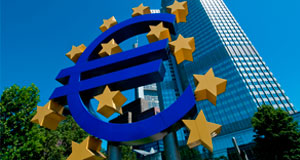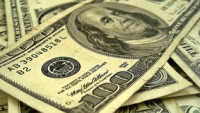 The Eurozone will see the release of its preliminary PMI prints for April on Monday, at 0800 GMT. Forecasts point to further cooling of economic activity, something likely to be discouraging news for ECB policymakers, who will announce their monetary policy decision on Thursday.
The Eurozone will see the release of its preliminary PMI prints for April on Monday, at 0800 GMT. Forecasts point to further cooling of economic activity, something likely to be discouraging news for ECB policymakers, who will announce their monetary policy decision on Thursday.
In April, Eurozone’s Markit manufacturing PMI is forecast to decline to 56.1, from 56.6 in March, while the services index is anticipated to dip to 54.6, from 54.9 previously. The composite figure – which blends the two measures – is expected to follow suit, drifting lower for the third consecutive month.
Despite the projected declines, all figures are expected to remain safely above the critical 50 line that separates expansion from contraction, signaling the bloc’s economy is still growing, albeit at a slower pace than previously. If so, this would further confirm the European Central Bank’s (ECB) concerns – that after a very strong start to the year, the economy is now losing momentum.
Coming on top of worries around protectionism, a stronger euro, and still-subdued inflation, fresh signals that the bloc is slowing down would likely amplify speculation that the ECB may adopt a more cautious, “wait-and-see” stance with regards to policy. The Bank is widely anticipated to begin scaling back its asset purchase (QE) program later this year, but continued disappointing data could lead policymakers to appear more conservative, perhaps noting that all options are on the table and that nothing is pre-set.
 In case the PMIs decline by even more than expected, that could enhance expectations for a more dovish tone by President Draghi and other ECB policymakers when the Bank meets again on Thursday, thereby weighing on the common currency. Euro/dollar could edge lower and challenge the 1.2260 zone – the range around this level was congested recently. A break below this support would initially bring the 1.2212 area into play, defined by the April 6 low, with even steeper declines aiming for 1.2150, the March 1 trough.
In case the PMIs decline by even more than expected, that could enhance expectations for a more dovish tone by President Draghi and other ECB policymakers when the Bank meets again on Thursday, thereby weighing on the common currency. Euro/dollar could edge lower and challenge the 1.2260 zone – the range around this level was congested recently. A break below this support would initially bring the 1.2212 area into play, defined by the April 6 low, with even steeper declines aiming for 1.2150, the March 1 trough.
On the upside, and in case of a positive surprise in the data, euro/dollar could spike higher for a test of the 1.2335 hurdle, marked by the inside swing low on April 17. Notice that the 100-period and 200-period moving averages on the 4-hour chart are not far off this point, at 1.2323 and 1.2334 respectively. An upside break of this territory would initially bring into scope the 1.2415 level, identified by the peaks of April 17, and subsequently the March 27 top at 1.2475.
Finally, note that the corresponding French and German PMIs for April will also be released on Monday ahead of Eurozone’s prints, at 0700 GMT and 0730 GMT respectively. Any major surprises in these figures may trigger a market reaction even before the bloc’s overall data are made public.
Origin: XM












